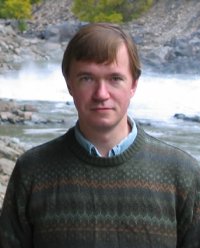NSF Award from the Division of Astronomical Sciences
Toward Understanding the High Redshift Lyman-Alpha Forest
- Principal Investigator: Nickolay Gnedin, PhD, Associate Professor, Department of Astronomy and Astrophysics, and the College; Fermilab: Theoretical Astrophysics Group; Kavli Institute for Cosmological Physics
- Start Date: August 15, 2009
- Total Award Amount: $270,606
Project Description
Dr. Gnedin will study how the intergalactic gas becomes ionized by hot stars in newly-formed galaxies, and by their active nuclei. He and his team will use very large simulations to calculate the expected absorption-line spectra from neutral hydrogen gas which we see as it was in the first 1-2 billion years after the Big Bang. To do this, they will follow the transfer of ultraviolet light from the galaxies through the intergalactic gas using a new approximation that they have developed, which is accurate as long as the ionized regions around bright quasars do not overlap. Thus the radiation will be fully coupled to the gas, so that its pressure can drive gas motions. Structures on small scales too small for the simulations to resolve will be added using a new formalism. The synthetic spectra will be compared to observations of quasars from the very large database of the Sloan Digital Sky Survey. Dr. Gnedin will make detailed tests of convergence for the simulations, and test new statistics for comparing the model spectra with those observed.
A graduate student will be trained by participation in the research. Dr. Gnedin will produce visualizations of the proposed simulations, and distribute them via museum partners, including the Adler Planetarium in Chicago and the American Museum of Natural History in New York City.
This award is funded under the American Recovery and Reinvestment Act of 2009, NSF Award number: 0908063

Nickolay Gnedin, PhD,
Associate Professor, Department of Astronomy and Astrophysics, and the College; Fermilab: Theoretical Astrophysics Group; Kavli Institute for Cosmological Physics
